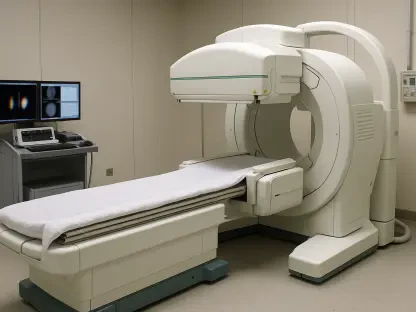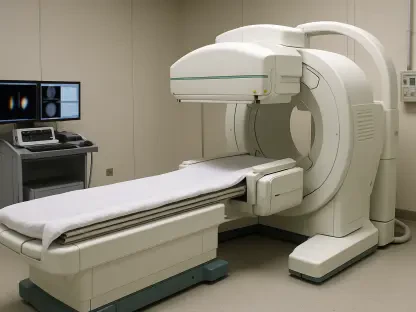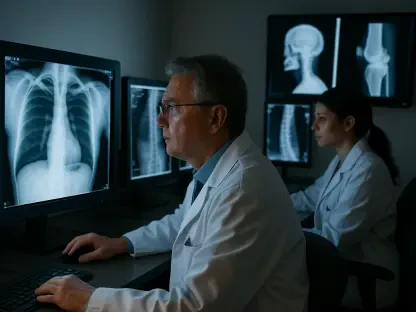James Maitland is an expert in robotics and IoT applications in medicine, driven by a strong passion for leveraging technology to advance healthcare solutions. In this interview, James provides insights into the growth of the clinical workflow solutions market, the influence of technology such as electronic health records and clinical decision support systems, and the impact of telemedicine, among other topics.
Can you provide an overview of the clinical workflow solutions market?
The clinical workflow solutions market has been experiencing substantial growth, driven primarily by the increasing demand for efficiency and better patient outcomes within healthcare facilities. This market is projected to grow significantly, with its value expected to reach approximately USD 29.4 billion by 2030. Several factors contribute to this growth, including advancements in technology like AI and IoT, which are being used to optimize and automate workflows, enhancing productivity, and patient satisfaction.
What role do electronic health records (EHR) systems play in clinical workflow solutions?
EHR systems are fundamental to modern clinical workflows. They improve access to patient information by digitizing patient records, allowing for real-time updates and easy access across multiple departments. This centralized system reduces errors by ensuring accurate and timely information sharing, which is crucial in clinical settings.
How are clinical decision support systems (CDSS) integrated into clinical workflows?
CDSS technologies assist healthcare providers by offering evidence-based recommendations based on patient data analysis. With AI and machine learning integration, these systems can analyze vast datasets to provide real-time insights and treatment suggestions, helping clinicians make more informed decisions. Recent advancements have made CDSS more intuitive and efficient, greatly enhancing their utility in clinical environments.
What types of clinical workflow solutions are available for managing patient flow?
Various solutions are designed to manage patient flow, such as systems that track patient status in real-time from admission to discharge. These solutions help reduce wait times and improve operational efficiency. For example, hospitals implementing patient flow management solutions have reported reduced bottlenecks and enhanced patient satisfaction due to smoother transitions and improved resource allocation.
What is the significance of telemedicine and virtual care platforms in clinical workflows? Telemedicine and virtual care platforms are crucial in today’s healthcare landscape, offering remote consultations and reducing the need for in-person visits. This has significantly alleviated the strain on healthcare facilities and increased access to care, especially during pandemics. Patients benefit from the convenience of receiving care from their homes, which has notably improved patient satisfaction and overall access to healthcare services.
How are laboratory information management systems (LIMS) essential for clinical workflows?
LIMS solutions streamline laboratory operations by automating the management and reporting of test results. They enhance the turnaround times and accuracy of lab results, reducing the likelihood of human errors. This efficiency is crucial for timely and accurate patient care, making LIMS a vital component in clinical workflows.
What recent technological advancements are shaping the clinical workflow solutions market?
AI and machine learning are significantly enhancing decision-making processes in healthcare by providing predictive analytics and personalized treatment plans. Cloud computing also plays a major role by facilitating the management and storage of large volumes of patient data, improving real-time data accessibility and collaboration among healthcare professionals.
How is the trend toward sustainability affecting clinical workflow solutions?
Sustainability is increasingly important in healthcare. Healthcare organizations are adopting eco-friendly practices such as using paperless systems and energy-efficient technologies. These practices contribute to reducing the environmental footprint of healthcare operations while also cutting operational costs.
What does the shift toward patient-centric care mean for clinical workflow solutions?
Patient-centric care focuses on improving the patient experience through flexible and efficient workflow solutions. This includes everything from streamlined appointment scheduling to better patient engagement tools that empower patients to take an active role in their healthcare journey.
How is data security being addressed in the clinical workflow solutions market?
With the rise of cloud-based solutions, data security concerns have become more prominent. Regulatory frameworks like HIPAA are ensuring that healthcare providers implement robust data security measures, including advanced encryption and multi-factor authentication, to protect sensitive patient information from cyber threats.
Can you discuss the competitive landscape of the clinical workflow solutions market?
The market is highly competitive, with key players like Cerner Corporation, Epic Systems Corporation, and Allscripts Healthcare Solutions leading the way. These companies are focusing on strategic collaborations, acquisitions, and continuous innovation to maintain their market positions. They heavily invest in research and development to expand their product offerings and improve clinical workflows.
Do you have any advice for our readers?
Stay informed about the latest technological advancements in healthcare and consider how these innovations can be integrated into your practice to improve efficiency and patient care. Adopting new technologies and sustainable practices can make a significant impact on operational performance and patient satisfaction.









